The Cultural and Artistic Impact of Bathtub Figurines
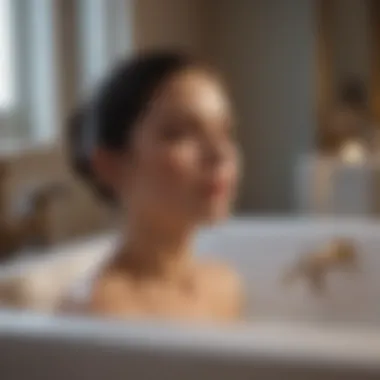
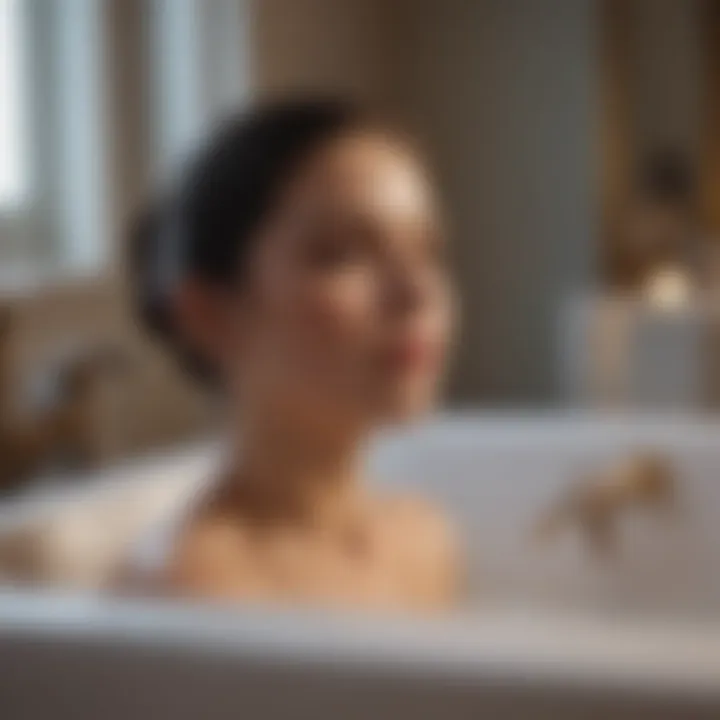
Intro
Bathtub figurines hold a unique charm that intrigues many across generations. They are more than mere decorations; they tell stories and embody the spirit of a home. Let’s not kid ourselves—who doesn’t feel a cozy warmth when looking at a delightful little figure soaking up the ambiance of a bathroom? As spaces become increasingly curated to reflect personal styles, understanding the rich backdrop of these figurines becomes crucial. This article seeks to illuminate the varied styles, color schemes, and cultural significances of bathtub figurines, catering specifically to housewives and homeowners who wish to elevate their personal spaces.
These items are steeped in history and artistry, often reflecting broader cultural movements and personal identities. Whether you prefer the sleek lines of a modern minimalist approach or the inviting warmth of a cozy rustic theme, bathtub figurines can enhance any bathroom aesthetic. Their roles within individual homes reveal much about our tastes and values, making them worthy of exploration.
Next, we’ll dive into some trending styles that have taken the world by storm, showcasing how these figures can do more than just sit pretty—they can transform your space.
Prelims to Bathtub Figurines
Bathtub figurines bring a certain charm and whimsy to personal spaces, particularly in bathrooms. These delightful decorative pieces can range from ornate porcelain statues to quirky resin designs, serving to enhance not only the aesthetic of the space but also to evoke memories and emotions. In this exploration, we will look into what defines these figurines, their evolution through history, and why they hold significance in home decor today.
Understanding bathtub figurines is not just about appreciating their craftsmanship; it's about recognizing how these small objects can encapsulate larger narratives of culture and personal identity. Households across different eras have utilized these decorative items to express taste, tradition, and sometimes, even humor. The importance of bathtub figurines goes beyond mere decoration—they serve as conversation starters, family heirlooms, and sometimes even reflections of one’s own life stages.
Defining Bathtub Figurines
Bathtub figurines are often characterized as small ornamental sculptures, which are specifically designed for placement in bathroom settings. Typically made from materials like porcelain, ceramic, or resin, they come in countless shapes and styles. Whether depicting whimsical characters, animals, or traditional figures, these collectibles can range from the elegant to the playful.
One notable feature is the ability of these figurines to transcend mere functionality. They transform a stark bathroom into a personal haven. For instance, a porcelain fairy might bring a feeling of whimsy, while a meticulously crafted mermaid might invoke a sense of tranquility, mirroring the nearby water sanctuary. While many people might choose to put them in bathrooms, they can rightly find a place in various areas, including kitchens, living rooms, and even gardens—catering to diverse tastes.
The Evolution of Figurines in Home Decor
Figurines have a long-standing presence in home decor, tracing back to ancient civilizations. They began as artifacts rooted in religious and mythological significance, often placed in homes to invoke blessings or protect families. Over time, the evolution shifted as cultures began to adopt decorative pieces as status symbols. Indoor decor became a reflection of personal identity, wherein individuals expressed their interests and values.
During different eras—from the art deco period to contemporary styles—bathtub figurines evolved too. In the early to mid-20th century, figurines became particularly popular in households as manufacturers sought to create charming characters reminiscent of community life and popular culture. The mid-century modern push towards minimalist and functional design led to a decline in more decorative pieces, but they’ve made a resurgence in recent days with unique and playful designs tailored to personal expression.
In summary, bathtub figurines have not just adapted to change; they’ve embraced it, intertwining with cultural shifts, artistic styles, and personal tastes across generations. Their importance within home decor continues to thrive, reminding us that even small nuances can contribute significantly to the atmosphere of a space, enhancing both functionality and charm.
Historical Significance of Bathtub Figurines
Understanding the historical significance of bathtub figurines is essential to appreciating their role in homes and cultures throughout time. These small sculptures serve not just as decorative objects but as cultural markers that reflect the aesthetics and values of the eras in which they were created. From their inception to the present day, bathtub figurines have undergone transformations that reveal much about societal changes, artistic movements, and cross-cultural influences.
Bathtub figurines provide insights into the past, allowing us to see how people in different time periods perceived beauty, craftsmanship, and self-expression within their domestic spaces. Their presence in bathrooms and other personal spaces signifies a collective yearning for comfort and beauty in everyday life. What might seem like a mere addition to decor holds layers of meaning that speak to identity, culture, and the passage of time.
Origins in Art History
The story of bathtub figurines can be traced back to ancient civilizations, where art was often tied to daily life and spiritual beliefs. For example, in ancient Egypt, small statuettes were frequently placed within tombs, intended to accompany the deceased into the afterlife. The motifs in those figurines varied significantly, often depicting gods or everyday life moments, reflecting the Egyptians' values. Likewise, in ancient Rome, household shrines displayed figurines as part of domestic worship, emphasizing their significance within personal spaces.
As time marched on, the Renaissance brought a blossoming of artistic expression, with figurines evolving from mere representations to more expressive forms. Artists began experimenting with materials like porcelain and clay, allowing for more elaborate designs and finishes. This period signified a turning point; figurines became symbols of refinement and status, often found in the homes of the affluent. The connection between art and everyday life forged a path that would continue through the centuries.
Cultural Variations Across Time
Cultural variations in bathtub figurines illustrate how different societies express their identity through art. For instance, in the 19th century, Japan produced intricate Satsuma pottery, featuring delicate figures adorned in vivid colors and meticulous detail. These figurines were often traded and collected worldwide, becoming popular in Western markets. They reflected Japan's cultural aesthetics while also showcasing the blending of East and West in decorative art.
In contrast, modern bathtub figurines can be seen as part of the mid-20th century kitsch movement, where whimsy and playfulness took center stage. Figurines of bathing beauties or whimsical animals became widespread in American homes, symbolizing leisure and nostalgia. These variations across time highlight how bathtub figurines are shaped by context, culture, and contemporary trends.
Importantly, bathtub figurines serve not just as decoration but as storytellers of cultural changes, artistic evolution, and personal identities.
In summary, the historical significance of bathtub figurines cannot be overstated. They emerge not only as decorative items but also as artifacts that provide a glimpse into past societies. The evolution from early representations of spiritual beliefs to modern expressions of personal taste underscores their profound connection to both artistry and cultural identity. Understanding this significance can aid collectors and enthusiasts in appreciating the rich narratives embedded in each piece.
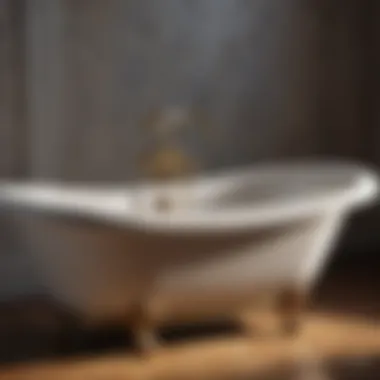

Artistic Styles of Bathtub Figurines
When discussing bathtub figurines, it becomes clear that the artistic styles play a pivotal role in shaping their aesthetic and cultural significance. Distinct styles not only reflect individual taste but also capture a moment in time—artistic movements, cultural shifts, and societal values can all be expressed through these intricate pieces. As a home decor element, they serve to embellish personal spaces while offering glimpses into the history and craftsmanship behind them.
Traditional vs. Contemporary Designs
Traditional designs typically draw on classic motifs, featuring figures that resonate with cultural folklore or iconic themes. For example, many bathtub figurines might depict cherubs, animals, or historical figures, often crafted in porcelain or ceramics that echo age-old techniques. These figurines often carry a sense of nostalgia, perhaps passed down through generations, carrying stories and meanings that transcend time.
On the other hand, contemporary designs take a more abstract or innovative approach, pushing the boundaries of creativity. Materials such as resin, glass, and even recycled elements are used to craft figurines, often leading to bold colors and striking forms. Contemporary artists might incorporate trends like minimalism or maximalism in their work, allowing for a diverse range of expressions that can attract younger generations or those looking to make a statement in their homes.
"Figurines are more than just decor; they are reflections of the personal style and cultural nuances that shape our living spaces."
Materials and Techniques
The choice of materials and techniques in crafting bathtub figurines significantly influences both their look and longevity. Traditional materials—like ceramic, porcelain, and clay—often require meticulous handcrafting, which can be labor-intensive but results in unique, artisanal pieces. The glazed finish on a porcelain figurine can emphasize its intricate details, making it a stunning focal point in a bathroom setting.
However, in contemporary designs, artisans might explore alternative materials like eco-friendly options or even 3D printing, which can yield more accessible and affordable products. Each material can evoke different feelings: smooth ceramics might create a serene atmosphere while vibrant plastics or glass can add a playful spark to the decor.
Notable Artists and Craftsmanship
Through the years, several notable artists have made their mark in the world of bathtub figurines, each bringing their own flair to the craft. For instance, artists like Mikasa have been revered for their fine craftsmanship in creating motifs that blend functionality with beauty, attracting collectors globally.
Craftsmanship also varies; some artisans utilize traditional techniques passed down through generations, while others might adopt innovative, avant-garde methods to challenge perceptions of what a figurine can be. This interplay between tradition and innovation is essential to understanding the ongoing evolution of bathtub figurines and their significance in contemporary home decor.
In summary, the artistic styles of bathtub figurines encompass a rich narrative that combines history and personal expression. From traditional to modern approaches in design, varying materials used, and the influence of artists throughout time, these figurines serve as both decorative pieces and meaningful objects within personal spaces.
Symbolism and Meaning in Figurines
Understanding the symbolism and meaning behind bathtub figurines is pivotal for those who seek to deepen their connection with these charming objects. Figurines are more than just decorative pieces; they embody stories, emotions, and cultural narratives that resonate with individuals on a personal level. Their significance in the home decor landscape is profound, offering not only aesthetic appeal but also an avenue for personal expression.
Common Themes and Motifs
When we take a closer look at bathtub figurines, one can’t help but notice a range of themes and motifs that recur throughout various cultures and historical periods. Some standout aspects include:
- Whimsy and Playfulness: Many figurines feature whimsical designs, such as smiling characters or animals engaged in amusing activities. This adds a light-hearted touch to any space, creating an inviting atmosphere.
- Nature Representation: Figurines often interpret elements of nature, from flowers to ocean waves. These motifs connect the indoors to the natural world outside, fostering a sense of tranquility and harmony.
- Cultural Narratives: Various figurines reflect cultural stories or myths, allowing individuals to showcase their heritage or interests. For example, a figurine representing a traditional dance could evoke pride in one's culture while serving as an eye-catching decor piece.
- Human Emotions and Experiences: Some designs capture human experiences, whether through joyful figures celebrating love or contemplative characters reflecting solitude. This emotional depth can resonate with viewers, making the figurines feel more personal.
These common themes encapsulate not just decorative purposes but also the narratives that define our daily lives.
Personal and Cultural Identity Through Decor
Figurines also play a significant role in reflecting personal and cultural identity. For many, these objects are not merely placed for aesthetic reasons; they serve as milestones in life, showcasing who we are or what we value. Consider these considerations:
- Reflecting Personal Stories: Each figurine can represent a momentous occasion or a cherished memory. A figurine gifted at a wedding or one purchased during a memorable trip can evoke powerful sentiments and narrate a unique story to anyone who lays eyes on it.
- Cultural Significance: In multicultural households, bathtub figurines can be emblematic of a particular heritage. They act as conversation starters, enabling connections between generations and cultures. For instance, a porcelain dragon could tell tales of luck in Chinese culture, while a whimsical mermaid might convey coastal charm for those who love the sea.
- Enhancing Home Ethos: The choice of figurines also reflects an individual’s taste and values. Displaying handcrafted or sustainable pieces might suggest a preference for artisanal goods and environmental consciousness, while vibrant, mass-produced items could indicate a love for modernity and trendiness.
"In every figurine, behind the glaze, lies a narrative yearning to be uncovered."
Exploring these meanings allows homeowners and decorators alike a chance to make intentional choices, turning their bathrooms into true reflections of their spirit.
Selecting Bathtub Figurines for Your Space


When it comes to enhancing the ambiance of a bathroom, selecting the right bathtub figurines is essential for adding a personal touch and aesthetic flair. These small decorative items not only create a focal point but also tell a story, reflect personal style, and invite conversation. The process of choosing figurines involves several considerations that, if thoughtfully approached, can elevate your space significantly.
Assessing Personal Style and Preference
Understanding your personal style is pivotal when selecting bathtub figurines. Everyone has unique tastes, whether it's modern minimalism or bohemian chic. Figurines should ideally harmonize with your overall bathroom decor. For example, if your space is dominated by clean lines and muted colors, a sleek ceramic piece in neutral tones could enhance the decor. On the other hand, vibrant and whimsical figurines could shine in a more eclectic setting.
Ask yourself a few key questions:
- What themes resonate with you? Do you prefer nature motifs, abstract forms, or figurines depicting human figures?
- What colors dominate your bathroom? Choosing figurines that complement or contrast your color scheme can create a pleasing effect.
- What style speaks to your personality? Your figurines should resonate with who you are, whether whimsical, elegant, or vintage.
By tuning into these aspects, you better position yourself to select figurines that not only beautify your space but also align with your identity.
Considerations for Size and Placement
Size and placement are critical aspects that determine how well your chosen figurines fit into your bathroom layout. The goal is to strike a balance so that the figurines enhance the space without overcrowding it.
- Scale Matters: Consider the dimensions of your bathtub and surrounding surfaces. A large figurine can dominate a small vanity, whereas smaller pieces can easily get lost in a spacious area. Use a mix of sizes for a visually appealing arrangement.
- Functional Placement: Think about where to place your figurines. Countertops, shelves, and ledges are popular spots. Ensure that they are in areas where they won't get knocked over or damaged. For instance, tall figurines should be positioned at eye level, while smaller ones can nestle into spaces that require a little interest.
- Grouping Techniques: Grouping figurines in odd numbers often yields a more natural and balanced look. Mixing textures and heights can create an inviting vignette. A sturdy base can also offer a strong visual appeal, anchoring your figurine display.
By keeping size and placement in mind, you enhance the functionality and aesthetic value of your bathtub area.
"Decor is not just about beautifying; it's about telling your story."
In summary, selecting figurines that resonate with your personal taste and fit thoughtfully into your bathroom space can transform a mundane area into a reflection of your individuality. Paying attention to size, style, and placement can turn these decorative objects into focal points of creativity and expression.
Caring for Bathtub Figurines
Taking care of bathtub figurines is not just about maintaining their aesthetic appeal; it reflects a respect for the craftsmanship and cultural history they represent. These figurines hold significance beyond mere decoration, often encapsulating emotions, memories, or cultural narratives. Proper care ensures that they continue to enhance your space for years to come, preserving both their beauty and the stories they tell.
Dusting and Cleaning Techniques
When it comes to cleaning, dusting is often overlooked. Dust can settle on figurines like a thick fog, diminishing their vibrancy and allure. The primary goal should be to keep that sparkle alive without risk of damage. Here are a few effective techniques to consider:
- Use a soft, lint-free cloth or feather duster for regular dusting. This can gently remove loose dirt without scratching the surface.
- For deeper cleaning, a mixture of mild soap and warm water can be used. Dampen a cloth with this solution and carefully wipe down the figurine, ensuring not to soak it. Rinse with a clean, damp cloth afterward to prevent any soapy residue.
- Avoid abrasive materials or harsh chemicals. Not only can these ruin the finish, but they might also cause permanent discoloration.
Tip: Establish a regular cleaning schedule, such as bi-weekly or monthly, depending on your local dust levels. Consistency helps keep your figurines fresh and appealing.
Preventing Damage from Moisture
Bathtub figurines are often placed in environments that are prone to high humidity. Moisture can be a silent enemy, leading to deterioration over time. Here are some strategies to shield your cherished pieces:
- Placement Matters: Positioning is critical. Keep figurines away from the most humid spots, like the shower. Consider alternative locations, such as shelves or cabinets nearby, where they can still be visually appealing yet safeguarded.
- Use Moisture Absorbers: If humidity is an issue in your bathroom, opt for desiccants or silica gel packets. Place these strategically to help control moisture levels.
- Regular Assessment: Periodically check the figurines for any signs of water damage, such as discoloration or peeling paint. Early detection can save you from more serious concerns later on.
Balancing beauty and practicality through proper care can transform your bathtub figurines from mere decorations into treasured artifacts. Not only do they enhance your personal space, but they also reflect your commitment to maintaining meaningful decor.
Displaying Figurines Effectively
When it comes to enhancing the ambiance of your bathroom, the display of bathtub figurines takes center stage. Not only do these little gems add a personal touch, but they also serve as conversation starters, reflecting one's style and creativity. A thoughtful arrangement can breathe life into an otherwise mundane space. In this section, we will explore how to incorporate figurines seamlessly into your bathroom decor and also create a harmonious look with other elements.
Incorporating Figurines Into Bathroom Decor
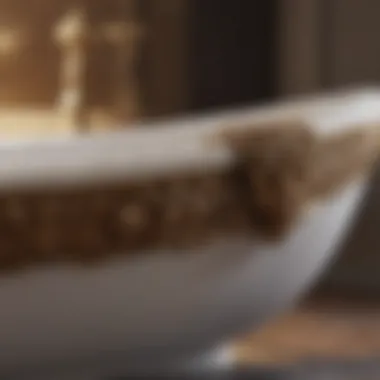
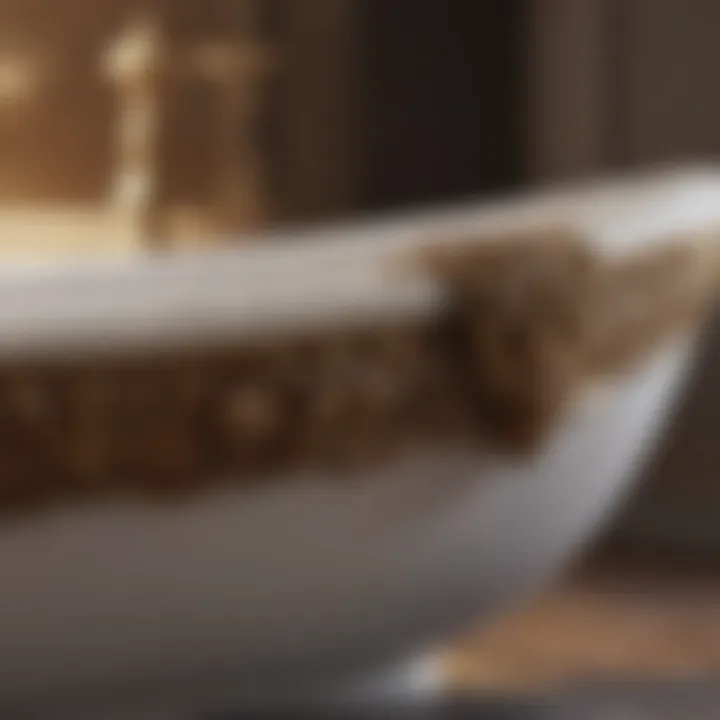
To create a striking display, one must consider the size and scale of the figurines relative to the bathroom environment. For instance, placing a tiny porcelain mermaid on a window sill might look charming, yet it can easily be overpowered by larger objects like soap dishes or towels. Conversely, an oversized ceramic figure can anchor a space, giving it character and whimsy.
- Strategic Placement: Position figurines where natural light can enhance their features. Sunlight dancing on a glossy finish can imbue a figurine with an ethereal glow.
- Theme Coordination: Choose pieces that resonate with your bathroom theme. A seaside motif, adorned with shells and marine figurines, can create a tranquil, coastal feel.
- Grouping: Arranging multiple figurines in clusters can establish focal points. Different sizes and heights can create visual interest; think of three varying heights grouped together.
"The right figurine can turn a simple bathroom into a sanctuary of style and personality."
Creating Cohesive Looks with Other Decor Elements
While figurines are captivating in their own right, they become part of a larger narrative when paired thoughtfully with other decor elements. Cohesion breeds harmony, enhancing the overall aesthetics of the space. Here’s how to blend figurines effectively:
- Color Matching: Ensure that the color palette of the figurines complements the overall decor. If your bathroom features soft pastels, a bright, contrasting piece might seem out of place.
- Material Consistency: Wooden figurines can be beautifully juxtaposed against ceramic tiles, but attention must be paid to textures. Mismatched materials can appear haphazard without a discernible reason.
- Functional Decor Items: Incorporate figurines with practical items, like toothbrush holders or soap dispensers, to maintain functionality while still showcasing your personality.
Future Trends in Bathtub Figurines
As we peer into the horizon of bathtub figurines, it becomes increasingly clear that the future holds exciting opportunities for both collectors and creators alike. The intersection of art, culture, and advancing technologies is reshaping how these figurines are conceptualized, designed, and appreciated. By addressing the sustainability of materials and the fresh perspectives brought forth by emerging talents, the realm of bathtub figurines is set to witness a revival that aligns with contemporary values and aesthetics.
Sustainability and Eco-Friendly Materials
The rising awareness surrounding environmental issues is now influencing every facet of our lives, including home decor. As house owners become more intentional about the materials they bring into their homes, there’s a corresponding shift in bathtub figurines towards sustainable and eco-friendly options.
Key moments in this evolution include:
- Natural Materials: Slowly but surely, creators are turning to biodegradable and renewable materials like bamboo and reclaimed wood. Such materials not only offer unique textures but also tell a story of sustainability.
- Recycling Initiatives: There are innovative designers who incorporate recycled glass or ceramics in their figurines, challenging the traditional notions of what defines beauty. This approach not only reduces waste but highlights creativity in an environmentally friendly manner.
- Water-Based Paints: To further minimize harmful chemicals, many figurine artists are opting for water-based paints. This makes them safer for both the environment and the home, especially in settings where children may be present.
"Sustainability isn’t just a trend; it’s a mindset that reflects our responsibility towards future generations."
The shift towards these eco-friendly methods not only helps protect our planet but also conveys a deeper message—one of mindfulness and care within our living spaces. As this trend solidifies, it will likely influence how consumers choose their decor, including bathtub figurines, making them more conscious of sustainability.
Emerging Designers and Innovative Concepts
Alongside the drive towards sustainability, a new wave of designers is emerging that challenges the old paradigms of bathtub figurines. These fresh voices bring innovation and creativity that resonate with the values of modern society.
Some noteworthy developments include:
- Interactive Art: There are artists creating figurines with interactive elements, such as movable parts or textures that invite touch. This kind of artistry elevates a simple ornament into a multisensory experience.
- Technological Integration: Ideas like smart figurines, embedded with technology to change color or light up, are making waves. While this might seem extravagant, these innovations offer a unique conversation piece for those who value both aesthetics and functionality.
- Cultural Narratives: Emerging designers often take inspiration from diverse cultures, weaving stories and meanings into their pieces. This not only enriches the narrative but allows house owners to foster a connection with their figurines that transcends mere decoration.
As the market for bathtub figurines continues to evolve, it’s fascinating to witness how creativity and consciousness merge. This future not only enhances the aesthetic landscape but represents a collective shift towards authenticity and connection in personal spaces. The choices you make in selecting these figurines could become a reflection of your values, creating spaces that resonate with both beauty and purpose.
Culmination
In the grand tapestry of personal decor, bathtub figurines hold a unique and significant place. They are more than just ornamental pieces; they serve as a reflection of individual identity, tastes, and even cultural heritage. This article has traversed various aspects of bathtub figurines, highlighting their historical significance, artistic styles, and the ways in which they can enhance personal spaces. Their lasting appeal lies in their ability to evoke memories, spark conversations, and transform an ordinary setting into something extraordinary.
The Lasting Appeal of Figurines in Personal Spaces
Bathtub figurines resonate deeply with house owners and housewives alike, serving not only as decorative items but as cherished mementos. This connection often stems from the memories associated with specific figurines, perhaps handed down through generations or purchased during memorable trips. These pieces tell stories, capturing fleeting moments and preserving them in decorative forms. They are tokens of nostalgia, each capturing a slice of life's journey, adding warmth and character to any space.
Furthermore, these figurines can resonate with a variety of aesthetic preferences. From whimsical creatures resting on the edge of a tub to elegant porcelain figures that blend seamlessly into luxury bathroom designs, there's an array of styles available. This versatility ensures that anyone can find a bathtub figurine that complements their personal style and elevates their home decor.
Encouraging a Reflective Approach to Decor
The presence of bathtub figurines in one’s home encourages a thoughtful and reflective approach to decorating. When selecting these ornaments, one often considers the emotions and memories associated with them, leading to mindful choices rather than impulsive acquisitions. By taking time to choose pieces that truly resonate, homeowners can create a space that feels authentically theirs.
Moreover, these figurines prompt individuals to reflect on their personal philosophies and cultural backgrounds. They can be symbols of personal triumphs, family heritage, or artistic appreciation. When thoughtfully considered, they enable deeper narratives within a household's decor. Integrating figurines into bathroom design not only beautifies the space but also encourages residents and visitors to engage in conversations regarding art, culture, and personal stories.
In essence, bathtub figurines are more than mere decorations; they are artifacts of identity and culture, inviting us to interact with our spaces in meaningful ways.
This exploration reinforces the notion that decor should be as much about aesthetics as it is about personal significance, and bathtub figurines are a prime example of this blend. As their popularity continues to grow, it’s crucial to recognize the beauty in the individual stories these pieces express, ensuring they remain integral to our individual and collective narratives.















